knee replacement
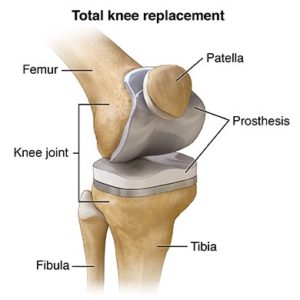 Why do I need a TKR? Several conditions call for a knee replacement. Osteoarthritis is one of the common reasons for knee replacement surgery. In such a circumstance, the cartilage of the knee wears out. These results in the formation of two bones forming the knee joint that rubs together. This condition is quite painful and restricts you from moving your knee as you once did.
Why do I need a TKR? Several conditions call for a knee replacement. Osteoarthritis is one of the common reasons for knee replacement surgery. In such a circumstance, the cartilage of the knee wears out. These results in the formation of two bones forming the knee joint that rubs together. This condition is quite painful and restricts you from moving your knee as you once did.
 Are there any alternatives to a TKR? Knee Replacement Surgery depends on the condition or the severity of the knee arthritis. The Knee Replacement Surgery is suggested only when you are done trying the other options and didn’t get any relief. Such options would be medication to get rid of the pain, significant weight loss, physiotherapy, or exercise to reduce the stiffness and improve the muscle strength through walking aids.
Are there any alternatives to a TKR? Knee Replacement Surgery depends on the condition or the severity of the knee arthritis. The Knee Replacement Surgery is suggested only when you are done trying the other options and didn’t get any relief. Such options would be medication to get rid of the pain, significant weight loss, physiotherapy, or exercise to reduce the stiffness and improve the muscle strength through walking aids.
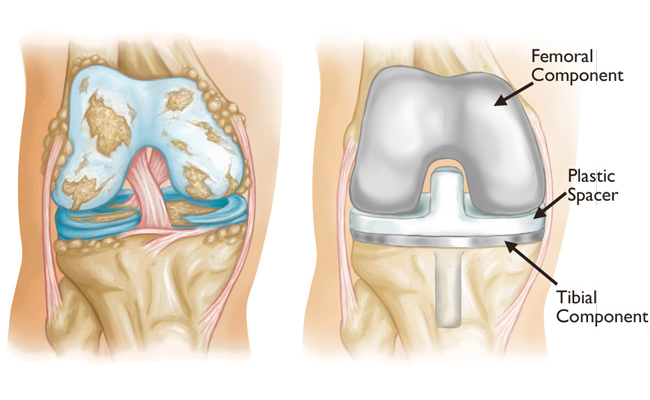 What is a TKR? If you severely damage your knee by injury or arthritis, it may be difficult for you to perform your daily chores or activities such as walking or climbing stairs. You might start getting a pain when you try to sit or lie down.
What is a TKR? If you severely damage your knee by injury or arthritis, it may be difficult for you to perform your daily chores or activities such as walking or climbing stairs. You might start getting a pain when you try to sit or lie down.
 If nonsurgical treatments fails do you any good, joint replacement surgery is the next most effective procedure to relieve the pain, correct your leg deformity to resume your normal activities.
If nonsurgical treatments fails do you any good, joint replacement surgery is the next most effective procedure to relieve the pain, correct your leg deformity to resume your normal activities.
How will a TKR help? The potential advantage of this surgery includes:
1. Reduced pain Knee Replacement has helped a majority of patients to get rid of the pain. However, it is reasonable to experience temporary discomfort after surgery. But our advanced techniques aim to make the surgery as comfortable as possible. In the majority of cases, the patients were allowed to walk on the very next day.
2. Improved stiffness The new joint is crafted with a highly engineered metal and a plastic surface that is designed to allow smooth and free movement.
3. Increased mobility It improves the overall movement of your body, along with reducing the pain and a significant improvement in stiffness.
Normal Knee Anatomy 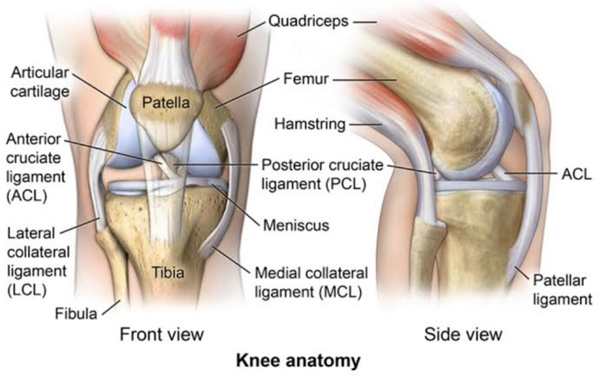 |
Photo osteoarthritis knee 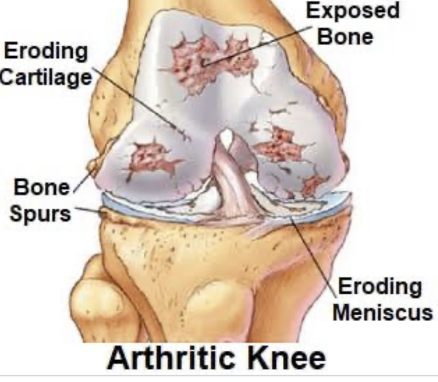 |
Are there risks associated with a TKR operation? As a coin has two sides, similarly, there are some rare risks associated with this surgery. It is, however, vital for you to have a keen knowledge of them.
Deep Vein Thrombosis (DVT) A Deep Vein Thrombosis is a blood clot that happens in the deep veins of the leg. To prevent the development of DVT, you will be given a set of stockings to help with your circulation along with medication that thins the blood. Our experienced physiotherapist and the nursing staff will teach you the practical exercises for your legs to ensure that you quickly start moving after your operation. Moreover, you would be advised to keep up with proper hydration by consuming plenty of liquids that also helps in minimizing the risk of DVT.
If clotting occurs and a part of it breaks off, it can travel to the lungs, and that’s when Pulmonary Embolus (PE) happens. This can affect the respiratory function, and therefore, everything is done to prevent the formation of DVT.
Infection There is about a 1 percent chance for infection, and hence all possible precautions are taken to avoid the infection during your surgery. It is mostly a superficial infection that can be cured with antibiotics. Moreover, a redo operation with advanced technology has an excellent success rate.
Before coming into the hospital, you have to go through the following process: Pre-assessment Right before the surgery, you will be asked to go through a battery of investigation such as Urine and BLOOD TESTS, X-Rays, and ECG ECHO. You will be then required to see an Anesthetist for PAC (Pre Anesthetic Check-Up). You might even be needed to see a physician or a cardiologist to check your overall fitness for the surgery. If you are found unfit for the surgery, you will be given another date for the operation.
What will happen when you arrive at hospital? You will be admitted to the hospital just a day before your surgery. Occasionally, patients need to undergo further tests before the surgery. However, on admission, you will meet a member of the expert team. Whenever you have any doubt, you can approach the member of staff without any hesitation
The day of your operation Our expert team will ask you not to eat or drink anything for approximately six hours before your operation. The anesthetist will visit you before the surgery. If you are on any regular medication, kindly consult the anesthetist what you can take on the day of operation.
The GDA will take you to the OT and hand you over to the care of the theatre team. TKR is generally carried out under a spinal anesthetic, and the whole process usually takes about 45 minutes to one hour. The complete procedure incorporating the anesthetic time and the positioning plus the preparation stay in the OT takes about 1.5 to 2 hours. You will later be shifted to the Surgical ICU for about one night.
Moreover, your legs might feel warm for a few hours after the successful surgery. The effect of anesthetic medicines might take their usual time to wear off. However, 2 hours after the surgery, you will be permitted to have liquids, and after 4 hours, you can resume your regular diet. You will also be asked to try doing some breathing exercises and ankle movements.
| knee osteoarthritis | ||
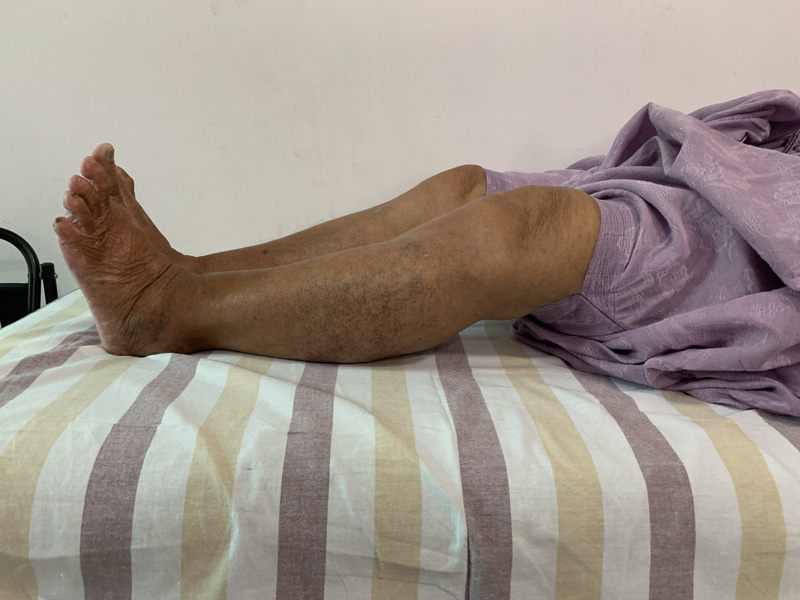 |
 |
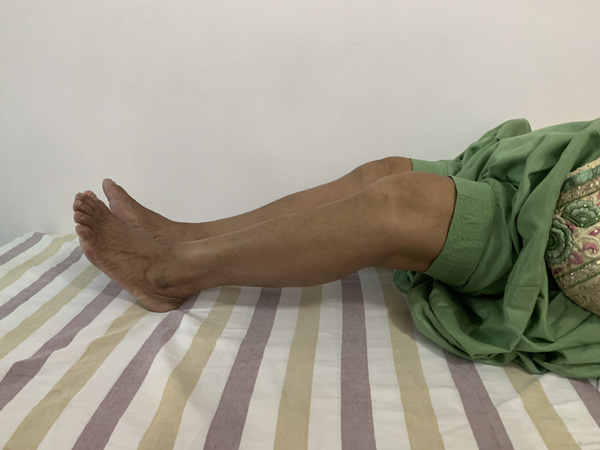 |
Getting back on your feet On the first day of post-operation, you will be shifted to your respective ward. The assigned physiotherapist will teach you the early stage of the necessary exercises. The therapist will help you walk a few steps, as well. Over the next five days, you will be taught further exercises. By the time of your discharge, the therapist will make sure that you are capable of doing your daily activities yourself.
What happens after discharge from Hospital A member of the physiotherapy team will visit you at your home daily and guide you for further exercises to enhance the range of motion and strength in the knee. Most people take the help of a walker for ambulation for about two weeks. It is also advisable to use a high commode chair for about four weeks post-surgery.
Some patients are also asked to attend the OPD after two weeks when the stitches from the knee are removed. You will then get the chance to see your surgeon. Also, you will be prescribed further medicines along with necessary exercises. If required, you will be advised to start walking with help for a stick. Some people need about 4 to 6 weeks to start walking independently again.
Exercises The following are some practical sets of exercises that should be performed three times per day for at least 12 weeks. These essentials exercises will improve the movement as well as the strength of your knee.
It is to be noted that the knee pain and stiffness remains for a few weeks after the surgery, and it is quite normal for everyone.
Exercises 1 Sit on a chair and keep one leg straight in front of you. Place your hands just above the knee cap on your thigh. Try to lean forward and keep your back straight. Try to straighten your knee, assisting the stretch with both your hands. Hold on to this posture for about 15 seconds.
Do five sets of this exercise for about three times per day. 
Exercise 2. Sit on a chair and try to pull your toes up. Try tightening your thigh muscle and straighten your knee. Hold on to this posture for about five seconds and slowly relax your leg. Repeat the same exercise for about ten times.
You can do this workout three times a day.

Exercise 3. Sit on a chair and keep a towel under your one foot. Try to sweep the floor as far as you can. Move your knee forward and make sure to keep the sole of your foot in contact with the floor. Hold the posture for about 10 seconds and then repeat the same thing for about ten times.
Do the same exercise three times a day.

Exercise 4. Lie down on your back and potentially try to bend your leg. Place a cushion under your knee and try to straighten your leg. Do this by pulling your foot and toes up and try to tighten your thigh muscle while straightening your knee. Hold this posture for 5 seconds and slowly relax.
Repeat ten sets of this exercise three times a day.

Sitting
Look for a firm chair, preferably with arms. You should choose the height of your chair based on your height. Also, use the firm cushions to raise your height.
Keep your knees lower than your hips so that it assists you in getting up and out of the chair. Avoid soft sofas and armchairs.
When bending your knee is painful, you can come out of the chair by pushing yourself up on the arms of the chair, taking the major part of your weight on your un-operated leg. You can reverse the same process while sitting down. If you are operated on both your knees, seek someone’s help while sitting or getting up.
Repeat the same process while getting on and off the toilet.
Kneeling We don’t advise kneeling for several months post-operation. Kneeling is advisable after a few months as you feel comfortable. You might also find it more comfortable while kneeling on a pad or cushion.
Dressing Try to dress sitting on a bed or a chair. Dress your operated leg first and undress it at last. It is advisable to wear a comfortable set of shoes with low heels.
Household tasks Patients are advised to try household chores in sitting position. You can use a tall tool to reach the worktops. You can carry items with a kitchen trolley. For the initial 4 to 6 weeks post-surgery, you are likely to take help from your spouse, relatives, or your friends for the household activities.
Getting in and out of a car It is advisable to keep the passenger seat as far as possible and slightly inclined. You can maintain the seat level with the help of a cushion. Keep the passenger door open and slide back to the car till you feel the seat at the back of your knees and slowly lower yourself down. You can reverse the above procedure to get out of the vehicle.
Driving and Return to work The situation here is different for different people. It mostly depends on the person’s significant fitness levels. However, most of the people resume driving between 6 to 8 weeks and return to their work between 8 to 12 weeks. The working condition also depends upon the nature of the work and how people usually get there.
What symptoms are considered normal after TKR Surgery The two most common symptoms are temporary swelling and stiffness. Such a situation is harmless and can last for about 6 to 8 months. They are part of a natural healing process. To counteract such a case, try and sit with your legs raised and move your knee along the range of motion before getting up after having sat for quite some time. Avoid standing in one position for long, as gravity will bend your knee even more.
Another common situation is either the numbness over the outer half of the knee or a clicking sound on walking. Again, there is nothing to worry about if you experience this after your surgery. It is normal and heals with time.
Moreover, patients might even feel tired or exhausted for a few months after the surgery. Your potential strength will gradually return over the next few months.
Last but not least, some people can even experience disturbed night sleep for some time. Do not worry about such symptoms as they spontaneously disappear in almost all the patients that further help them to lead a pain-free and happy life.
| Post Knee Replacement | ||
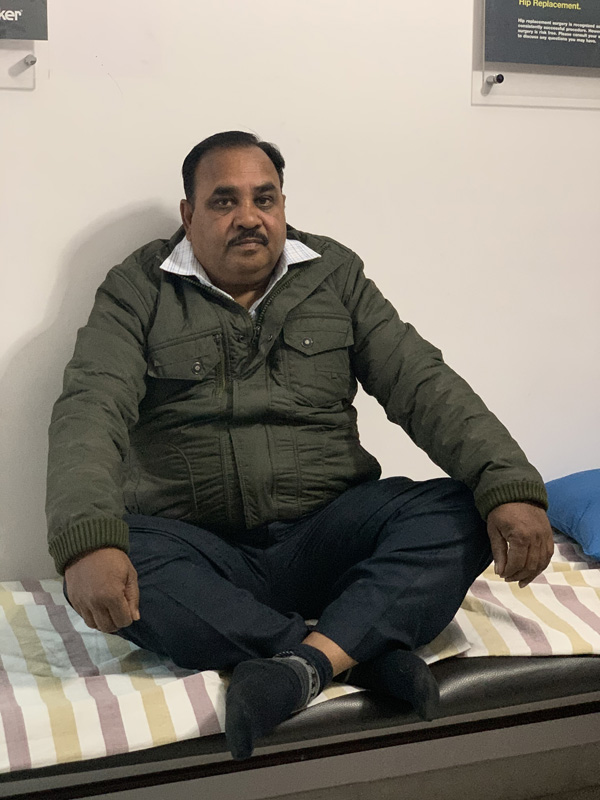 |
 |
 |
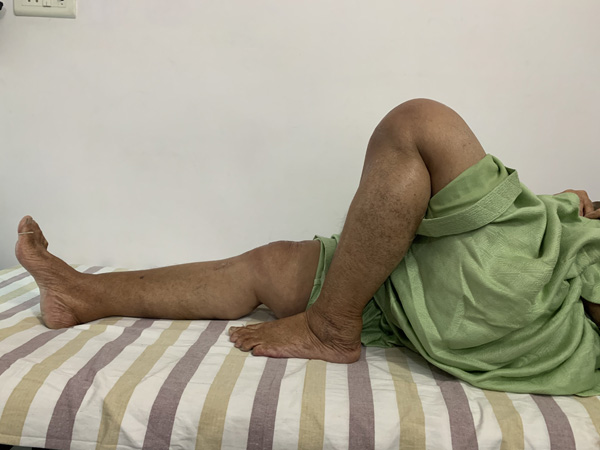 |
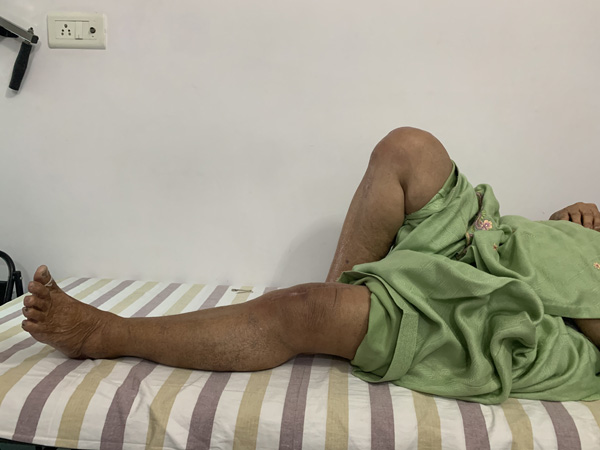 |
 |
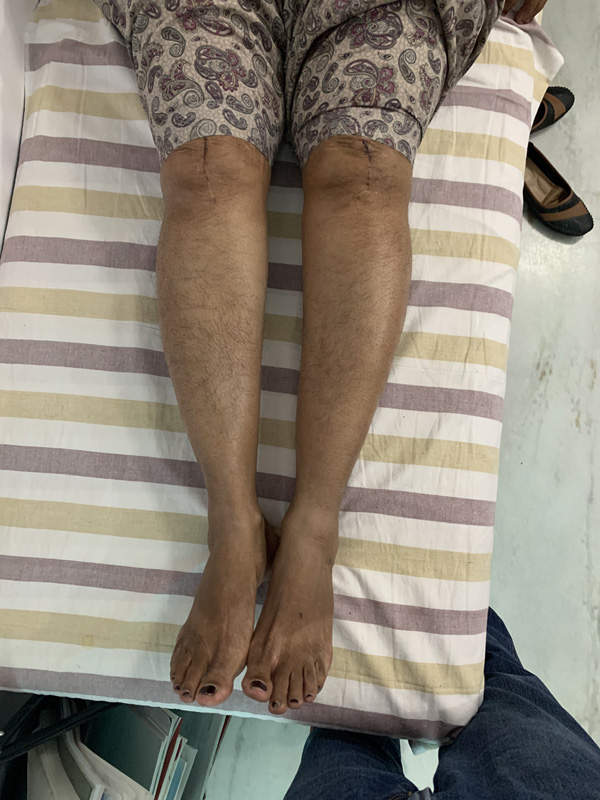 |
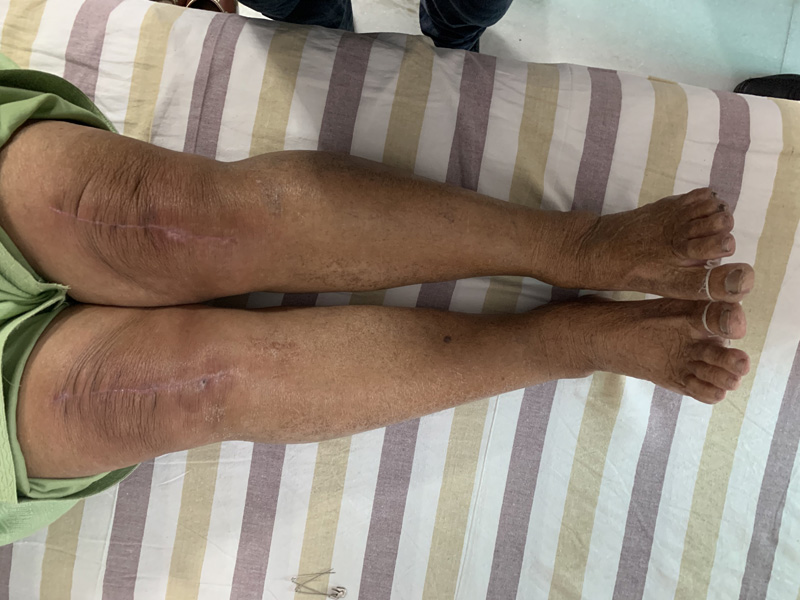 |
|